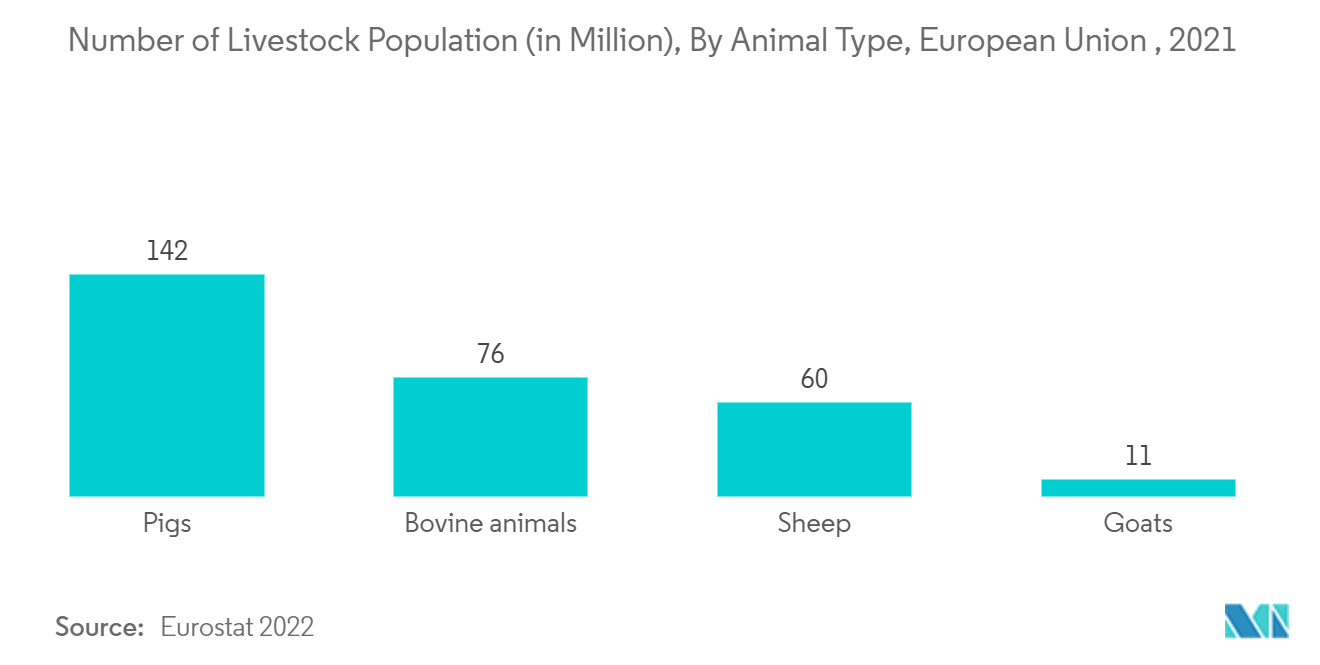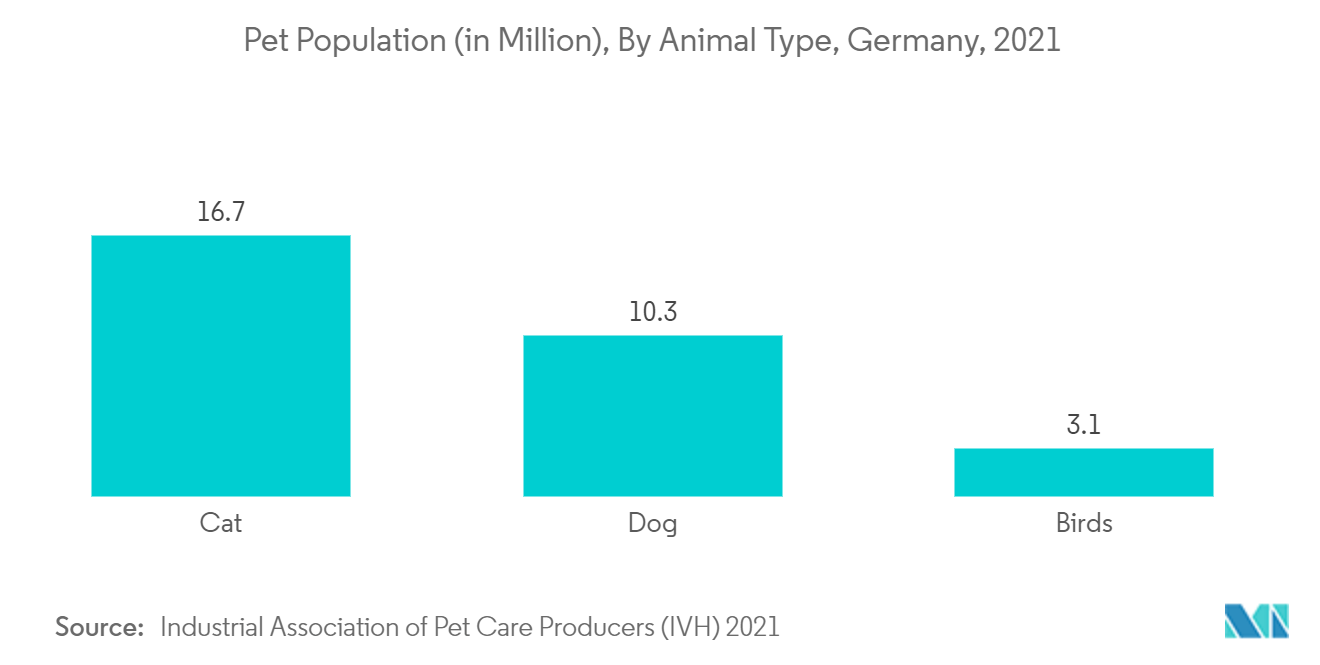Market Trends of Europe Veterinary Vaccine Industry
This section covers the major market trends shaping the Europe Veterinary Vaccine Market according to our research experts:
Live Attenuated Vaccines Segment is Expected to hold the Largest Market Share Over the Forecast Period
The live attenuated vaccines segment in the European veterinary vaccine market is projected to grow at a faster rate during the forecast period owing to rising demand for live attenuated vaccines for the effective management of veterinary diseases. Live/attenuated vaccines contain a weakened version of the living microbe, making it ineffective in causing diseases. The live attenuated vaccines produce a similar yet weakened reaction as compared to that natural infections, which makes them more effective than the other types of veterinary vaccines. The efficacy of the live attenuated vaccines, such as strong cellular and antibody responses that often confer lifelong immunity with only one or two doses, is expected to drive the growth of the studied segment over the forecast period.
The efficacy of the live attenuated vaccine over the conventional vaccines is also expected to boost the growth of the studied segment. For instance, the MSD Manual data published in 2021 mentioned that the use of live organisms in veterinary vaccines is more effective than inactivated vaccines in triggering cell-mediated immune responses.
These vaccines must be stored and handled properly, with strict attention to temperature, even in the lyophilized (free-dried) state. After the reconstitution, the dose of the vaccine should be administered promptly (within 1 hour) or discarded. Some examples of these types of vaccines include canine distemper virus vaccines and all canine parvovirus and adenovirus-2 vaccines. For instance, in August 2021, EMA published that Nobivac DP plus is a live attenuated veterinary vaccine that can be used to protect dogs against two separate infections caused by canine distemper virus and canine parvovirus. Such availability of live attenuated vaccines authorized by government organizations is expected to contribute to the growth of the studied segment. Owing to the rising use of live attenuated vaccines, the segment is contributing to the largest market share of the European veterinary vaccine market.

Germany is Expected to Hold Notable Share in the Market Over the Forecast Period
Germany is expected to hold a significant share of the Europe veterinary vaccine market during the forecast period.
The factors attributing to the growth of the market in Germany are increasing zoonotic diseases and key market players' activities. For instance, in January 2021, Boehringer Ingelheim introduced the VAXXITEK HVT+IBD+ND vaccine, which offers robust immune support and improved defense against Marek's infectious bursal disease (classic and variant kinds), and Newcastle disease.
According to DDH, 2022, 47% of the households in Germany will have pets in 2021. In addition, 34.7 million dogs, cats, small animals, and ornamental birds were kept by the population in the country. As per the same source, the number of cats adopted was higher in Germany as compared to dogs, as 16.7 million cats live in 26% of German households in comparison to 10.3 million dogs in 21% of families, including the number of mixed-breed dogs. Thus, the rising adoption of pets and other companion animals in the country is expected to increase the need for vaccination to prevent them and themselves from developing zoonotic diseases, which is anticipated to propel the market growth over the forecast period.
Likewise, the large livestock and cattle population in Germany is also expected to contribute to the demand for veterinary vaccines, thereby contributing to the market's growth. For instance, in the article published by German Livestock in March 2021, Germany had around 12.9 million head of cattle in total, including 4.2 million dairy cows and 0.7 million suckler cows. The article also mentioned that Germany has the largest dairy cattle herd and the second-largest cattle population in the European Union.
Furthermore, a 2021 German study published in September 2022 reported the incidence of diarrhea to be 18.5% and the most common disease observed in almost 14,000 neonatal calves examined on 731 German dairy herds. As a result, it is projected that these changes will have a beneficial effect on the market, spurring market expansion over the forecast period in Germany.


